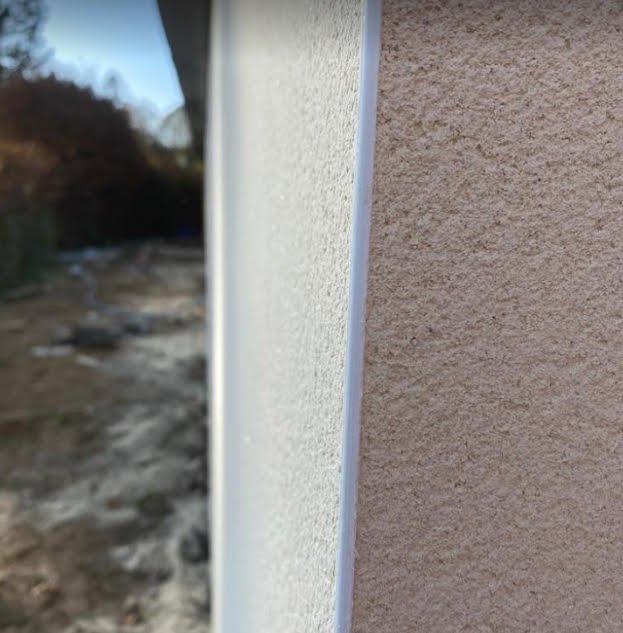
Plastering
Looking for top-notch plastering services in Norwich, Norfolk, or throughout East Anglia?
Look no further!
Our skilled plasterers, deliver flawless finishes that enhance the beauty and durability of your property.
The expertise of our experienced team ensures precision and longevity, guaranteeing surfaces that withstand the test of time, no matter how awkward the angles!
Whether you're in Norwich, Norfolk, or anywhere in East Anglia, our personalised service caters to properties of all shapes and sizes.
Contact us today to transform your space with expert plastering!
Our Comprehensive Guide to Plastering: What It Is, How It Works, Its Benefits and Drawbacks
Plastering is an age-old technique used to create smooth, durable surfaces on walls and ceilings. Whether you're renovating a historic home or constructing a new one, understanding plastering can significantly impact the quality and longevity of your walls. This comprehensive guide will walk you through what plaster is, how it bonds to the wall, why people choose plastering, and its benefits and drawbacks.
What Is Plaster?
Plaster is a building material used for coating, protecting, and decorating walls and ceilings. It is typically made from a mixture of lime or gypsum, water, and sand. When applied wet, plaster sets and hardens, providing a smooth and solid finish. There are different types of plaster, including lime plaster, gypsum plaster, and cement plaster, each with unique properties and applications.
How Plaster Bonds to the Wall
The bonding process of plaster to walls is both a chemical and mechanical phenomenon. Here's a step-by-step look at how it works:
Surface Preparation: Before applying plaster, the surface must be clean, damp, and free of dust. Sometimes, a bonding agent or primer is applied to enhance adhesion.
Application: The plaster is applied in layers. The first layer, known as the scratch coat, is key for bonding. It is roughened to provide a good grip for subsequent layers.
Setting and Hardening: As the plaster dries, a chemical reaction occurs (hydration in gypsum plaster and carbonation in lime plaster), causing it to harden. The mechanical bond is formed by the plaster gripping onto the rough surface of the wall.
Finishing: Additional layers are applied to smooth out the surface, culminating in a finish coat that provides the desired texture and appearance.
Why People Get Plastering Done
People opt for plastering for various reasons, including aesthetics, durability, and historical accuracy. Here are a few key reasons:
Aesthetic Appeal: Plaster can be textured or polished to create a wide range of finishes, from rustic to ultra-smooth. It provides a superior surface for painting or wallpapering.
Durability: Properly applied plaster is incredibly durable and resistant to everyday wear and tear. It also offers good fire resistance and can help with soundproofing.
Restoration and Preservation: In older homes, plastering is often necessary to restore and preserve historical integrity. Lime plaster, for instance, is breathable and works well with old buildings that need to manage moisture.
How Plaster Is Used to Repair Walls and Cracks
Plaster is an excellent material for repairing walls and fixing cracks. Here's how it’s done:
Preparation: Before repair, the area around the crack or damaged section is cleaned to remove loose material and dust. For deeper cracks, it may be necessary to widen the crack slightly to ensure the plaster can fill it properly.
Applying the Plaster: A bonding agent is often applied to the area to improve adhesion. Plaster is then carefully applied in layers. For small cracks, a single coat might suffice, but larger repairs typically require multiple layers.
Layering: Each layer of plaster must be allowed to set before the next one is applied. The first layer fills the depth of the crack or hole, while subsequent layers build up the surface to match the surrounding wall.
Finishing: Once the plaster has filled the crack and is level with the surrounding wall, the final layer is smoothed out. This might involve sanding once the plaster is dry to ensure a seamless finish.
Painting: After the plaster has fully dried and cured, the repaired area can be painted to match the rest of the wall, making the repair virtually invisible.
Benefits of Plastering
Superior Finish: Plaster provides a smooth, hard surface that is ideal for painting and decorating.
Durability: Once set, plaster is strong and long-lasting. It resists scratches, dents, and impacts better than drywall.
Fire Resistance: Plaster is non-combustible and can help slow the spread of fire.
Sound Insulation: Plaster has excellent sound-insulating properties, making it ideal for reducing noise between rooms.
Moisture Management: Lime plaster, in particular, is breathable and helps manage moisture in walls, reducing the risk of damp and mold in older buildings.
Drawbacks of Plastering
Cost: Plastering is generally more expensive than drywall installation due to the labour-intensive process and the skill required.
Time-Consuming: The application process is lengthy, especially for multi-layered systems that require drying time between coats.
Repair Difficulty: While durable, plaster can crack over time, and repairs can be more challenging and costly compared to drywall.
Skill-Dependent: Achieving a high-quality finish requires a skilled plasterer. Poor application can lead to a subpar result, affecting both appearance and durability.
Conclusion
Plastering is a timeless technique that offers a host of benefits, from aesthetic versatility to robust durability. While it does come with some drawbacks, particularly in terms of cost and repair difficulty, the advantages often outweigh the disadvantages, especially for those seeking a high-quality, long-lasting finish. Whether you're preserving an old building or looking to enhance the beauty of a new one, plastering remains a valuable option worth considering.
By understanding the intricacies of plastering, you can make informed decisions about your next home improvement project, ensuring a result that is both beautiful and enduring.
We Cover…




